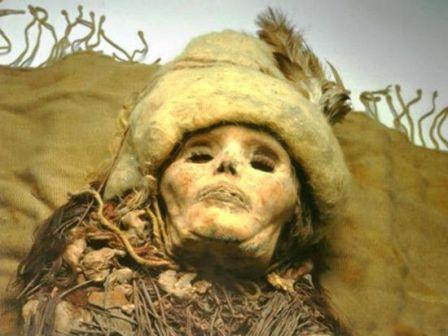

Yang Yiming, an associate professor at UCAS, Andrej Shevchenko at the Max Planck Institute of Molecular and Cell Biology and Genetics in Dresden, Germany and their colleagues analysed 3,600-year-old lumps found at the neck and chest of mummies in the cemetery and identified them as a 'kefir' cheese.
The cheese was found among the funeral objects in some ancient tombs in Tarim Basin in northwest China’s Xinjiang Autonomous Region. It was identified as the oldest material cheese found in the world. The scientific periodical “Nature” has published the news in March 6, 2014.
This type of cheese is made by curdling ruminant milk with a symbiotic culture of bacteria, including Lactobacillus kefiranofaciens, and yeast. Evidence of a kefir dairy — which makes lactose-free products — in this region explains why large-scale ruminant herding and milking spread in a population known to have been lactose intolerant, the authors say. The origin of cheese making dates back some 4,000 years earlier, but evidence for this has relied on analysis of milk fat in pottery shards.
Edited by Xia Yu